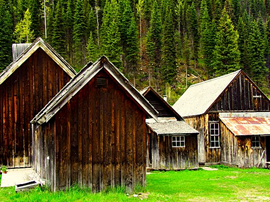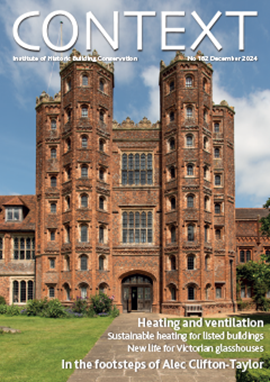Limewash
Interior Paint, A guide to internal paint finishes, published on 1 January 2007 by Historic Scotland, states: ‘Although mainly associated with external work, limewashes have been used as interior coatings for centuries. Limewash is quicklime mixed in a water suspension (in a process called ‘slaking’). Additives were sometimes included to give a degree of protection against water penetration. Colour was provided by natural pigments. Only a limited range of materials were suitable due to the caustic (strong alkali) nature of the lime. Highly permeable, limewash was painted directly onto lime plaster or masonry. Limewash reflected light well; with the cured carbonate containing tiny refractive crystals which sent light out in different directions. Unless highly filtered and strained, limewash finishes provided an uneven, textured finish that can be appropriate for pre-18th century structures (although this makes it unsuitable for classical or formal rooms). Limewash was largely superseded by the use of distemper in the 19th century.’
Short Guide: Climate Change Adaptation for Traditional Buildings, published on 10 July 2017 by Historic Scotland, defines limewash as: ‘A simple type of traditional breathable paint or coating made from lime and water, with or without additives.’
[edit] Related articles on Designing Buildings
IHBC NewsBlog
SAVE celebrates 50 years of campaigning 1975-2025
SAVE Britain’s Heritage has announced events across the country to celebrate bringing new life to remarkable buildings.
IHBC Annual School 2025 - Shrewsbury 12-14 June
Themed Heritage in Context – Value: Plan: Change, join in-person or online.
200th Anniversary Celebration of the Modern Railway Planned
The Stockton & Darlington Railway opened on September 27, 1825.
Competence Framework Launched for Sustainability in the Built Environment
The Construction Industry Council (CIC) and the Edge have jointly published the framework.
Historic England Launches Wellbeing Strategy for Heritage
Whether through visiting, volunteering, learning or creative practice, engaging with heritage can strengthen confidence, resilience, hope and social connections.
National Trust for Canada’s Review of 2024
Great Saves & Worst Losses Highlighted
IHBC's SelfStarter Website Undergoes Refresh
New updates and resources for emerging conservation professionals.
‘Behind the Scenes’ podcast on St. Pauls Cathedral Published
Experience the inside track on one of the world’s best known places of worship and visitor attractions.
National Audit Office (NAO) says Government building maintenance backlog is at least £49 billion
The public spending watchdog will need to consider the best way to manage its assets to bring property condition to a satisfactory level.
IHBC Publishes C182 focused on Heating and Ventilation
The latest issue of Context explores sustainable heating for listed buildings and more.















